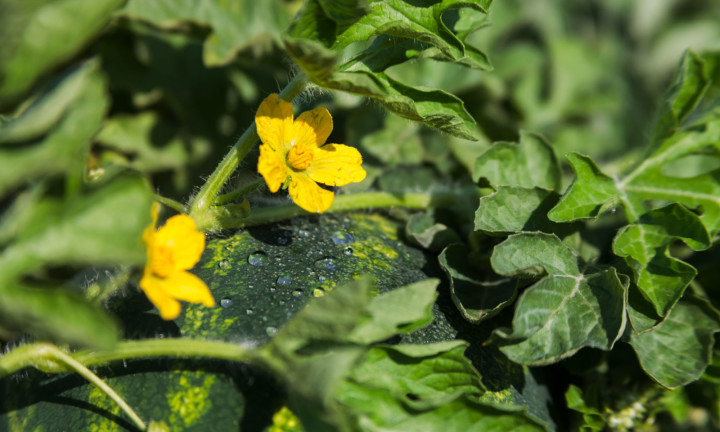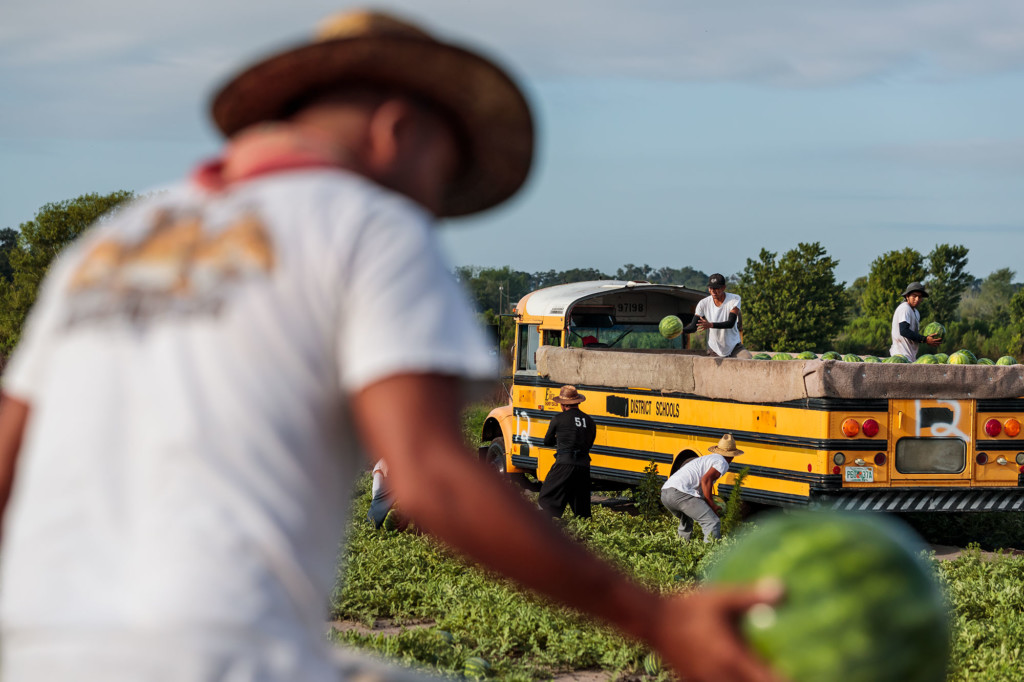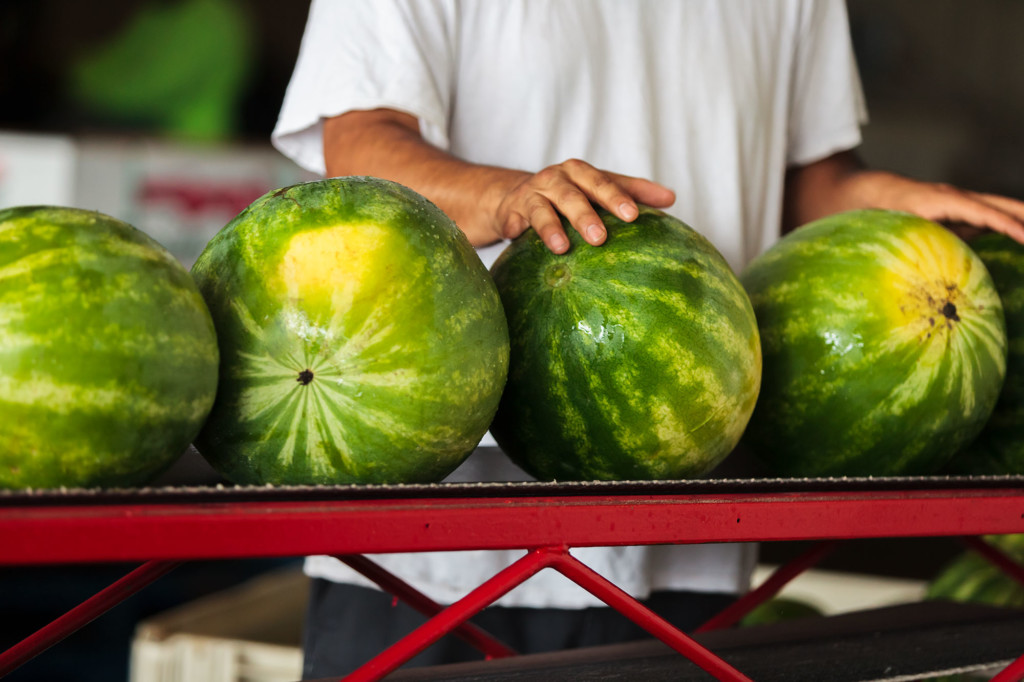Cultivation

Watermelon in the Fields
Watermelon plants love the heat. Sun + bees + well-drained sandy soil + water are what’s needed to grow watermelon. For commercial production, watermelon nursery stock is transplanted in rows, 8 to 12 feet apart, in raised beds, 4 to 12 inches high. Irrigation is carefully managed through the growth cycle to optimize fruit set, fruit size and yield.
Bee colonies are placed in the field when the male flowers begin to appear; the bees pollinate the large yellow female flowers in order for the plant to bear fruit. Even the sterile seedless watermelon requires pollination in order to fruit.
Vines spread 6 to 8 feet in 30 days, and within 60 days the vine presents its first watermelons. The crop is ready to harvest within 3 months.
Watermelons are harvested at full maturity. The fruit does not ripen (develop internal color or increase in the sugar content) after being removed from the vine.

Growers approximate the time for the first picked based on the specific physical characteristics for each cultivar, weather conditions throughout the growing season and other variables. Some growers use a Brix test to assess the total soluble solids of the flesh.
Most fields are picked twice during the season. On average, each watermelon plant produces two to three harvestable fruit. Each time the field is harvested, any exposed watermelons are re-covered with leaves or straw to prevent sunburn.
A sharp knife is used to cut watermelons from the vine, then they are flipped over “belly up” to indicate they are ready. “The belly” is the pale yellow spot on the underside of the watermelon where it rested on the ground while growing. Watermelons pulled from the vine may crack open or result in damage to the stem end. Pickers use these characteristics to check for ripeness:
- Firm symmetrical fruit with a pale or buttery yellow spot on the bottom.
- Heavy for its size due to the fruit’s high water content.
- Free from bruises, cuts and dents; a few scratches are ok
A pitching crew follows the cutters and pitches the watermelons from hand to hand, and then loads them in trucks to be transported to the packing shed. Watermelons are loaded on their sides to protect the thinner rind at the top and bottom from damage.
Watermelon in the Packing Shed
At the packing shed watermelons are inspected for quality, graded, washed, separated according to size and packed for shipment.
Watermelons are loaded by hand into 700-pound bins for shipping and distribution to terminal markets, wholesalers and distributors. Size counts for 700-pound bins of seeded and seedless watermelon are 36, 45 and 60. The count refers to the number of watermelon in the bin. The higher the size count the smaller the watermelon. Cartons for minis weigh 45 to 50 pounds with 6 to 10 pieces of fruit per carton; the most popular size counts are 6 and 8.

A foodservice industry option for packaging for seeded and seedless watermelons is a carton that weights 65 to 70 pounds with 3 to 6 pieces of fruit per carton.
Labeling on bins and cartons includes:
- Watermelon type
- Count
- Net weight
- Source country
Watermelon History
The origin of watermelon has been traced back to the deserts of southern Africa some 5,000 years ago, where it still grows wild today. This ancestor of the modern watermelon is a tough, drought tolerant fruit prized for its ability to store water for tribes crossing the Kalahari Desert.
The first evidence of people eating watermelon was recorded in Egyptian hieroglyphics as early as the 2nd millennium BC. In the 10th century, China began cultivating watermelon, and at around that same time the Moors are thought to have brought watermelon to Europe and the warmer climates of the Mediterranean.
European colonists and the slave trade brought watermelon to the Americas in the 16th century, with the fruit grown first in Florida. Watermelon reached South America in the 17th century.
Find us on social media
Follow us for more recipes, tips and tricks.
